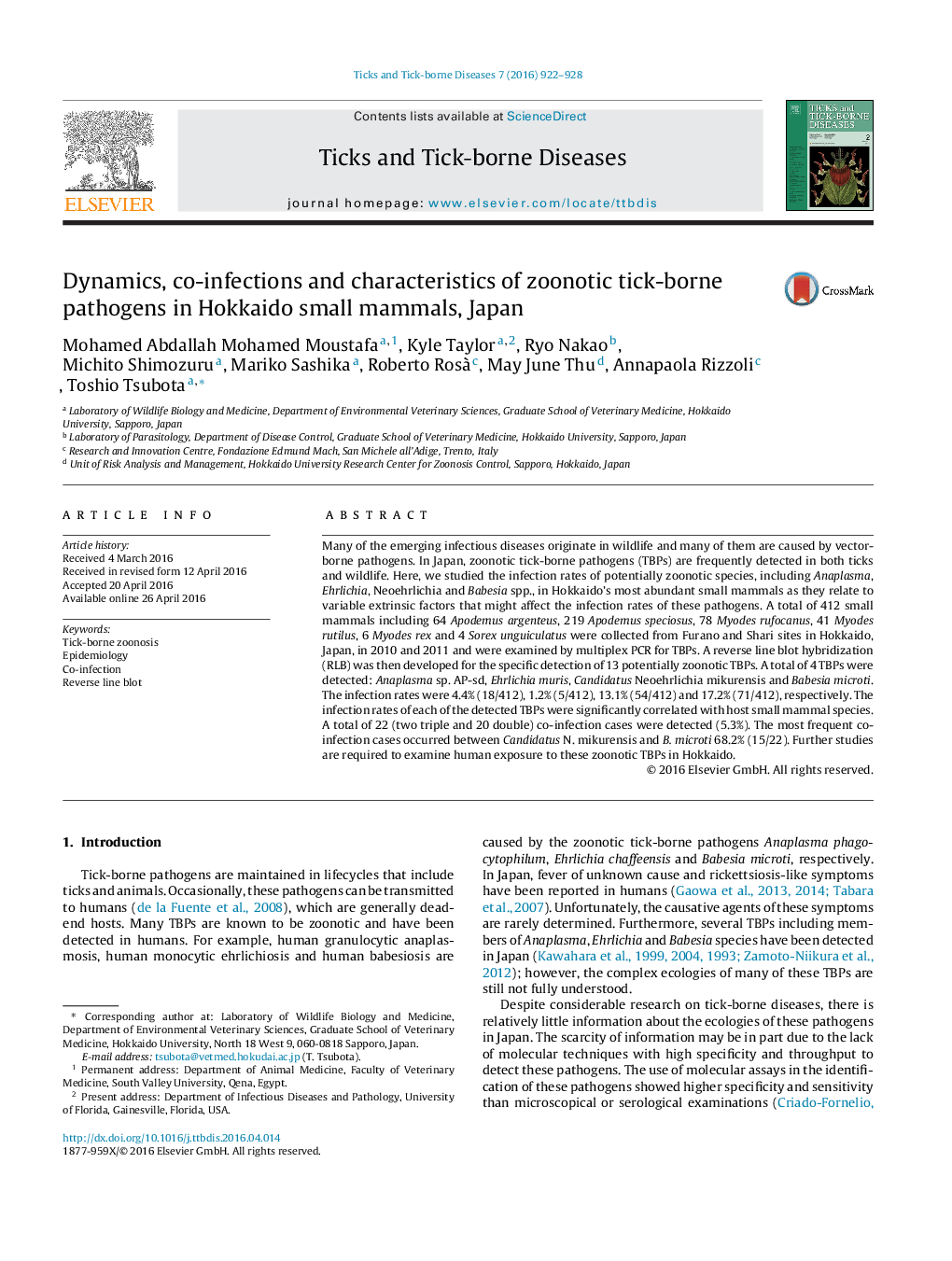| Article ID | Journal | Published Year | Pages | File Type |
|---|---|---|---|---|
| 5546411 | Ticks and Tick-borne Diseases | 2016 | 7 Pages |
Many of the emerging infectious diseases originate in wildlife and many of them are caused by vector-borne pathogens. In Japan, zoonotic tick-borne pathogens (TBPs) are frequently detected in both ticks and wildlife. Here, we studied the infection rates of potentially zoonotic species, including Anaplasma, Ehrlichia, Neoehrlichia and Babesia spp., in Hokkaido's most abundant small mammals as they relate to variable extrinsic factors that might affect the infection rates of these pathogens. A total of 412 small mammals including 64 Apodemus argenteus, 219 Apodemus speciosus, 78 Myodes rufocanus, 41 Myodes rutilus, 6 Myodes rex and 4 Sorex unguiculatus were collected from Furano and Shari sites in Hokkaido, Japan, in 2010 and 2011 and were examined by multiplex PCR for TBPs. A reverse line blot hybridization (RLB) was then developed for the specific detection of 13 potentially zoonotic TBPs. A total of 4 TBPs were detected: Anaplasma sp. AP-sd, Ehrlichia muris, Candidatus Neoehrlichia mikurensis and Babesia microti. The infection rates were 4.4% (18/412), 1.2% (5/412), 13.1% (54/412) and 17.2% (71/412), respectively. The infection rates of each of the detected TBPs were significantly correlated with host small mammal species. A total of 22 (two triple and 20 double) co-infection cases were detected (5.3%). The most frequent co-infection cases occurred between Candidatus N. mikurensis and B. microti 68.2% (15/22). Further studies are required to examine human exposure to these zoonotic TBPs in Hokkaido.
